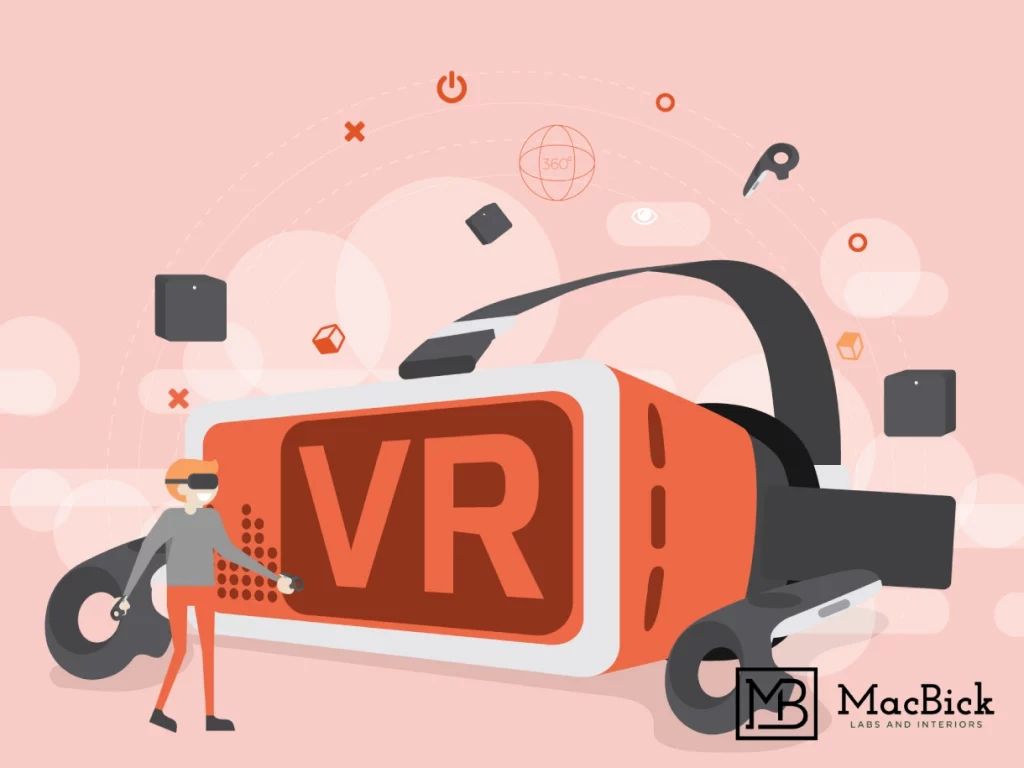Virtual Reality (VR) is rapidly transforming the world around us, providing us with new ways to experience and learn about the world. The educational sector is no exception, with VR providing a wealth of opportunities for students to learn in immersive and engaging ways. One area where VR is particularly promising is in laboratories of schools and colleges.
In this blog, we will explore what virtual reality labs are, how they work, and the benefits they offer to students and educators alike.
What are virtual reality labs?
Virtual reality (VR) labs are computer-generated simulations of real-world laboratory environments, yielding an interactive learning experience for students. These labs offer a safe, accessible, and cost-effective alternative to traditional laboratories.
Such labs enable students to practice experiments and explore scientific concepts without the need for physical equipment or materials. By leveraging the advantages of VR, educators can provide their students with a dynamic and engaging learning experience that enhances their understanding of complex scientific concepts and theories.
How to Use Virtual Reality in Laboratories
Here are a few different ways how schools and colleges can leverage VR labs to enhance the learning experience of students:
Simulation and Experimentation
One of the most intriguing uses of VR in laboratories is the ability to simulate experiments and create virtual scenarios. For example, students can use VR to simulate chemical reactions, conduct dissections, or perform physics, biology, or chemistry experiments. They can observe the reaction of different materials without any safety hazards. These simulations can provide students with a safe environment to learn and experiment without any risks.
Immersive Field Trips
It is also a unique way for students to experience field trips that might otherwise be impossible. For example, students can visit a far-off location, such as an archaeological site, without leaving the classroom. They can engross themselves in the experience and learn about different cultures, societies, and scientific discoveries. It can also provide an opportunity to conduct research in the fields unavailable in their local area.
Assessing Students’ Performance
Virtual reality can also be used to monitor and assess student’s performance in laboratories. By tracking students’ actions and decisions during virtual lab experiments, educators can gather valuable insights into their problem-solving skills, understanding of concepts, and areas for improvement. This data can be used to provide targeted feedback and support, enhancing the overall learning experience.
Interactive Learning
VR provides an interactive learning experience for students. In a virtual laboratory, students can interact with objects and equipment in a way that they might not be able to in a traditional laboratory. For example, they can use their hands to move objects, manipulate equipment, or adjust settings. This hands-on experience can help students learn and retain information better.
Collaborative Learning
Besides individual experiences, Virtual reality also creates an opportunity for collaborative learning. Students can work together in a virtual lab, sharing information and working on projects. They can interact with each other and their teacher, asking questions and receiving feedback in real time. This collaborative learning can help students build teamwork skills and improve communication skills.
Advantages of Using Virtual Reality in Laboratories
Using VR in laboratories offers a range of advantages over traditional teaching methods. Some of these advantages include the following:
Customizable Learning Experience: Virtual reality allows educators to tailor the laboratory experience to meet the needs of individual students. Teachers can adjust the difficulty level or modify experiments based on students’ progress and understanding. This personalized learning approach can help students overcome specific challenges and grasp complex concepts more effectively.
Safe and Cost-Effective Lab Experiments: Among the most significant applications of VR in laboratories is the ability to perform virtual lab experiments. Virtual lab simulations allow students to manipulate various laboratory tools, equipment, and chemicals without the risks associated with handling actual materials.
Students can experiment with hazardous chemicals or delicate equipment without the fear of causing accidents or damage. Additionally, virtual lab experiments are often more affordable than their physical counterparts. A virtual laboratory can be used repeatedly without the need for costly materials and equipment maintenance.
Immersive Learning: Virtual reality can improve students’ understanding of complex scientific concepts by providing immersive 3D visualizations. For example, VR can help students visualize the atomic structure of elements, the human anatomy, or chemical reactions, fostering a deeper understanding of the subject matter. The interactive nature of VR enables students to engage with these concepts actively, promoting retention and application of knowledge.
Remote Access: Virtual reality laboratories can be accessed remotely, enabling students to participate in experiments and practical learning from anywhere with an internet connection. This increases accessibility to quality education for students who may not have access to well-equipped physical laboratories. Remote access also facilitates collaboration between institutions, as students and educators can work together on projects and share resources without geographic constraints.
Final Word
In order to successfully implement VR in laboratories, educators need to have the right resources and technology. This includes VR headsets, software, and programming expertise. Additionally, educators should receive proper training on how to use the technology and incorporate it into their teaching strategies effectively.
In conclusion, virtual reality has a huge potential to enhance the laboratory learning experience. Educators must take advantage of this technology and provide their students with the best tools to learn and grow. As technology advances, virtual reality is poised to become an even more integral part of laboratory education, helping students gain a deeper understanding of concepts and simulations that were once impossible to achieve. By leveraging the advantages of VR, laboratories in schools and colleges can provide a safer, more engaging, and accessible learning experience to students.
However, it is essential to note that VR should not replace traditional laboratory experiences entirely. It is crucial for students to have hands-on experience with real equipment and materials to fully understand the physical properties and limitations of their experiments. VR should be used as a complementary tool to enhance the overall learning experience.


